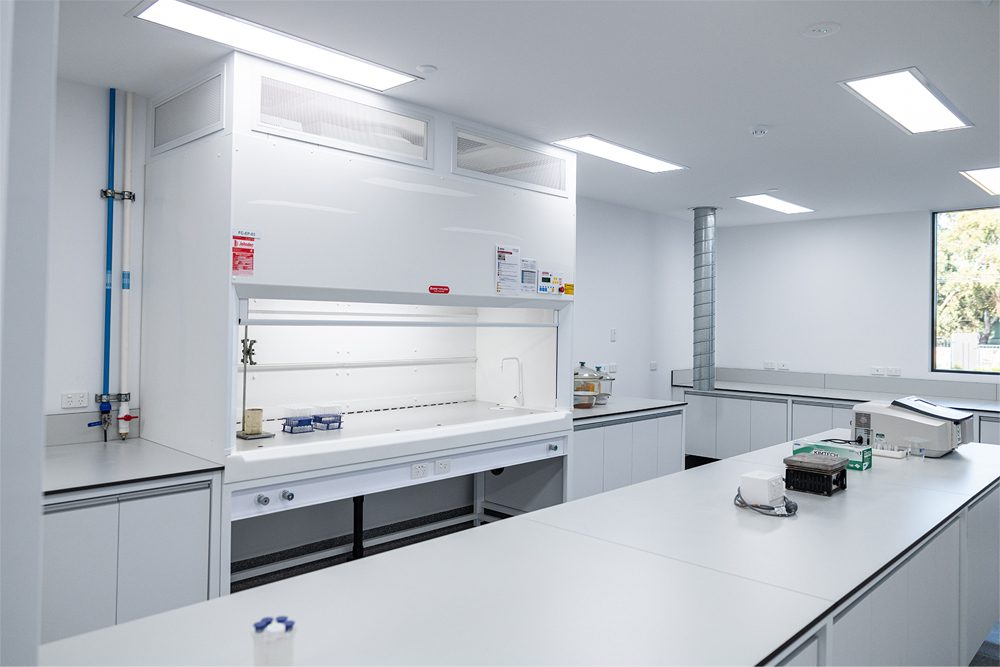Forensic cabinets play a pivotal role in preserving and examining evidence within forensic laboratories. These cabinets are meticulously designed to offer a controlled environment where evidence can be analysed and processed without the risk of contamination or exposure to hazardous substances.
Within the field of forensic cabinetry, filtration systems represent a critical component, safeguarding the well-being of forensic professionals and the credibility of forensic analyses. In this comprehensive exploration, Johndec gives an in-depth look at filtration systems within forensic cabinets, illuminating their significance and intricate functionality.
To explore state-of-the-art filtration systems and custom solutions tailored to forensic cabinets, visit Johndec Engineering Plastics WA—a leader in high-quality, Australian standard compliant forensic equipment.
The need for filtration systems in forensic cabinets
Forensic cabinets serve a multifaceted purpose, including the examination of biological samples, evidence handling, and chemical analysis. These tasks often involve the use of hazardous materials, volatile chemicals, or biological specimens that may harbour pathogens. Therefore, maintaining a pristine and secure environment within the cabinet is paramount to the success of forensic investigations and the health and safety of laboratory personnel.
Roles of filtration systems
Filtration systems integrated into forensic cabinets fulfil several pivotal roles, each crucial to the successful and safe operation of a forensic laboratory:
Contaminant removal
Filtration systems in forensic cabinets are primarily tasked with the removal of a variety of contaminants from the air inside the cabinet. This includes a wide range of particulate matter such as dust, pollen, spores, and microscopic debris, which are crucial to capture in forensic settings where even the smallest particle can contaminate evidence or skew analytical results. Moreover, many forensic analyses involve the use of chemicals that can emit harmful vapours.
The filtration systems employ activated carbon or similar materials to adsorb and neutralise these fumes, effectively preventing them from affecting both the samples and the laboratory environment. Additionally, in scenarios where biological samples are handled, there is an inherent risk of exposure to bacteria, viruses, or other biohazards. Advanced filtration systems, especially those equipped with HEPA filters, are highly effective in trapping these biological agents, ensuring a safe and controlled environment for the examination of such materials.
Operator protection
The protection of forensic professionals working within these cabinets is a critical function of filtration systems. These professionals are often in close contact with toxic substances, and the filtration systems mitigate the risk of inhalation or direct exposure to these toxicants, contributing significantly to workplace safety.
In the context of handling biological evidence, there’s a heightened risk of exposure to infectious agents. The filtration system acts as a critical barrier in this regard, filtering out pathogens and providing a safe working environment. Moreover, continuous exposure to even low levels of hazardous materials can have long-term health effects. Filtration systems play an essential role in minimising this cumulative exposure, thereby protecting the long-term health and well-being of forensic personnel.
Evidence integrity
Maintaining the integrity of evidence is a fundamental aspect of forensic science, and filtration systems play a pivotal role in this regard. They help in maintaining a sterile environment, which is crucial for preventing cross-contamination between different pieces of evidence.
This cross-contamination prevention is essential for the integrity of forensic analyses. Furthermore, by filtering out contaminants, these systems assist in maintaining stable environmental conditions within the cabinet. Such stability is crucial for certain types of evidence that might be sensitive to changes in air composition or quality.
By ensuring a contaminant-free environment, filtration systems directly contribute to the accuracy and reliability of forensic analyses. This aspect is particularly vital in forensic science, where the results must withstand rigorous scrutiny in legal contexts, underscoring the importance of maintaining a pristine environment for evidence examination.
Components of filtration systems
Filtration systems integrated into forensic cabinets typically comprise several essential components:
HEPA filters: High-efficiency particulate air (HEPA) filters form the core of any filtration system in a forensic cabinet. These filters are designed to capture particles as small as 0.3 microns with an impressive efficiency rate of 99.97%. HEPA filters are indispensable for the removal of airborne contaminants, such as dust, pollen, and bacteria.
Activated carbon filters: To address volatile organic compounds (VOCs) and chemical fumes, activated carbon filters are deployed. These filters employ adsorption to trap and neutralise harmful gases, ensuring that the air inside the cabinet remains free from toxic chemicals.
UV-C germicidal lamps: For cabinets utilised in biological and microbiological applications, UV-C germicidal lamps play a pivotal role in eradicating and sterilising any microorganisms present in the air. These lamps emit short-wave ultraviolet (UV-C) radiation, which disrupts the DNA of pathogens, rendering them inert.
Fan systems: Filtration systems encompass fan systems designed to efficiently circulate and filter the air within the cabinet. These fans facilitate the maintenance of a uniform airflow pattern, guaranteeing that all areas within the cabinet receive proper filtration.
Monitoring and alarms: Many contemporary forensic cabinets are equipped with monitoring systems that continuously assess the performance of the filtration system. Alarms are triggered in the event of a drop in filter efficiency or any other issues, promptly alerting laboratory personnel to take corrective action.
Conclusion
Filtration systems integrated into forensic cabinets are indispensable for creating a secure and controlled environment in which forensic professionals can work. These systems protect operators from exposure to hazardous materials, preserve the integrity of evidence, and ensure the precision of forensic analyses.
A comprehensive understanding of these filtration systems is imperative for all individuals involved in forensic investigations. It underscores the significance of maintaining and meticulously monitoring these systems to ensure their sustained effectiveness and the safety of all personnel engaged in the forensic process within Australia.
For further information on advanced filtration systems and bespoke designs that meet the rigorous demands of forensic analysis, consider reaching out to Johndec Engineering Plastics WA, where expertise and innovation in forensic laboratory equipment are at the forefront

